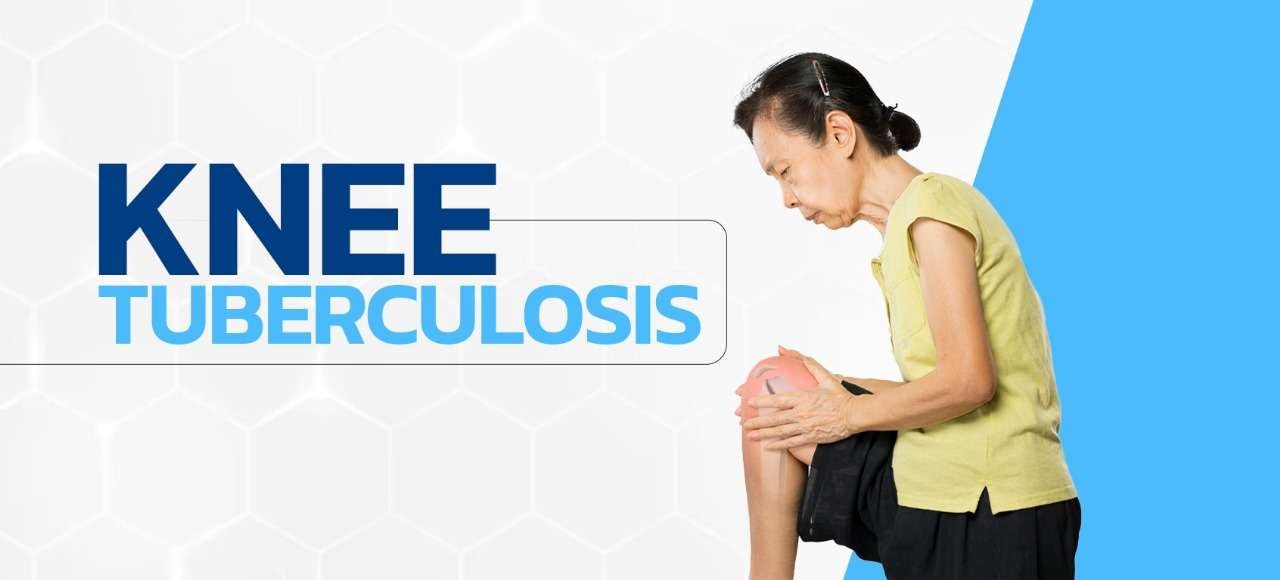

Knee tuberculosis, commonly referred to as TB knee, is a form of tuberculosis that affects the knee joint, causing inflammation, pain, and potential joint damage if not treated promptly. Understanding this condition is crucial for early detection and effective management. In this comprehensive guide, we will explore what knee tuberculosis entails, its symptoms, diagnosis methods, treatment options, preventive measures, and the importance of timely intervention.

In Thane, Dr. Bakul Arora practices as a consultant orthopedic and joint replacement surgeon. At the moment, he works at Arora Clinic. His area of expertise is minimally invasive procedures that have several advantages for patients. He performs the procedure using the Direct Anterior Approach for Hip Replacement Surgery and the Subvastus Approach for Knee Replacement Surgery. For patients, these innovative treatments offer numerous benefits.Knee replacement surgery with less invasiveness has surgical advantages.

Tuberculosis (TB) is an infectious disease caused by Mycobacterium tuberculosis bacteria. While it primarily affects the lungs (pulmonary tuberculosis), it can also spread to other parts of the body, including bones and joints. When tuberculosis affects the knee joint, it leads to knee tuberculosis, characterised by localised inflammation and damage to the knee’s structure and function.
Knee tuberculosis typically occurs when the bacteria reach the knee joint through the bloodstream or from nearby infected tissues. The bacteria then multiply within the joint, causing chronic inflammation known as synovitis. Over time, this inflammation can lead to the destruction of cartilage, bone, and other joint structures, resulting in severe pain, deformity, and disability if left untreated.
Tuberculosis of the Knee Symptoms Early Signs and Symptoms-
Early knee TB symptoms may be subtle and nonspecific, initially resembling other knee conditions. These may include:
Early detection is crucial as these knee bone TB symptoms can progress if the infection spreads, leading to more severe joint damage and complications.
As knee tuberculosis advances, symptoms become more pronounced and debilitating. These may include:
Knee tuberculosis diagnosis begins with a thorough medical history and physical examination. The healthcare provider will inquire about symptoms, recent infections, travel history, and potential exposure to tuberculosis. Physical examination focuses on assessing the tb in the knee joint for signs of swelling, tenderness, warmth, and range of motion limitations.
Imaging techniques play a crucial role in diagnosing knee tuberculosis. X-rays may initially show nonspecific changes such as joint space narrowing or bone destruction. MRI (Magnetic Resonance Imaging) and CT (Computed Tomography) scans provide more detailed images of soft tissues and bone structures, helping to identify characteristic features of tuberculosis infection in the knee joint.
Laboratory tests are essential for confirming the diagnosis of knee tuberculosis. Synovial fluid analysis involves extracting fluid from the knee joint to check for the presence of Mycobacterium tuberculosis bacteria. Blood tests, including interferon-gamma release assays (IGRAs) and tuberculin skin tests (TSTs), help assess the immune response to tuberculosis bacteria and aid in diagnosis.

The primary knee tuberculosis treatment involves a combination of antibiotics, typically administered over a prolonged period (usually 6 to 12 months). These antibiotics, such as isoniazid, rifampicin, ethambutol, and pyrazinamide, work together to eradicate the tuberculosis bacteria from the body. Adherence to the prescribed medication regimen is critical to prevent drug resistance and ensure successful treatment outcomes.
In cases where tuberculosis of the knee leads to significant joint damage or abscess formation, surgical interventions may be necessary. Surgical procedures such as joint debridement (removal of infected tissue), abscess drainage, or even Knee replacement surgery may be performed to restore joint function and alleviate pain.

Following medical and surgical treatment, rehabilitation and physiotherapy are essential components of recovery. Physical therapy helps restore knee joint mobility, strengthen surrounding muscles, and improve overall function. Specific exercises and stretches tailored to the individual’s condition aid in reducing stiffness, enhancing flexibility, and promoting long-term joint health.
To reduce the risk of knee tuberculosis and tuberculosis in general, it is essential to practice good hygiene, especially respiratory hygiene. This includes covering the mouth and nose when coughing or sneezing, and properly disposing of tissues contaminated with respiratory secretions. Adequate ventilation in living and working spaces also helps reduce the spread of tuberculosis bacteria.
Individuals at higher risk of tuberculosis, such as those with weakened immune systems (due to HIV/AIDS, diabetes, or other conditions) or individuals living in crowded or poorly ventilated environments, should take additional precautions. This includes regular screening for tuberculosis infection, prompt treatment of latent tuberculosis infection, and vaccination where available and appropriate.
While early diagnosis and treatment can prevent severe complications, untreated tuberculosis of the knee joint can lead to significant joint destruction, permanent disability, and even life-threatening systemic infections if the bacteria spread to other organs. Complications may include chronic pain, joint deformity, and secondary infections requiring further medical intervention.
Managing knee tuberculosis involves ongoing medical care, adherence to prescribed treatments, and lifestyle adjustments to support joint health and overall well-being. Regular follow-up visits with healthcare providers are essential to monitor treatment progress, manage symptoms, and address any potential complications or concerns.
Ongoing research into tuberculosis treatment and diagnostics continues to improve outcomes for individuals with knee tuberculosis. Advances in antibiotic therapy, surgical techniques, and rehabilitation strategies aim to enhance treatment efficacy, reduce treatment duration, and improve the quality of life for patients affected by this challenging condition.
For individuals living with knee tuberculosis and their caregivers, access to support groups, patient education resources, and healthcare providers specializing in infectious diseases and orthopedic specialist doctor can provide invaluable support, guidance, and information throughout the treatment journey.
In conclusion, knee tuberculosis is a serious infectious disease that requires prompt diagnosis, appropriate treatment, and comprehensive care to prevent irreversible joint damage and disability. Early recognition of symptoms, thorough diagnostic evaluation, adherence to prescribed treatments, and comprehensive rehabilitation are essential for successful management. If you suspect you or someone you know may have knee tuberculosis, seek medical attention promptly for personalized assessment and care. By raising awareness and understanding of knee tuberculosis, we can work towards better outcomes and improved quality of life for those affected by this condition.
Knee tuberculosis, also known as TB of the knee, is a form of tuberculosis that specifically affects the knee joint. It is caused by Mycobacterium tuberculosis bacteria and can lead to chronic inflammation, joint damage, and disability if not treated promptly.
Symptoms of knee tuberculosis may include persistent knee pain, swelling, warmth around the knee joint, stiffness (especially in the morning), visible joint deformity in advanced stages, and systemic symptoms such as fever and unintentional weight loss.
Diagnosis of knee tuberculosis involves a thorough medical history, physical examination, imaging studies (X-rays, MRI, CT scans), and laboratory tests (synovial fluid analysis, blood tests). These help confirm the presence of Mycobacterium tuberculosis bacteria and assess the extent of joint involvement.
Treatment for knee tuberculosis typically involves a combination of antibiotics (such as isoniazid, rifampicin, ethambutol, and pyrazinamide) administered over several months. Surgical interventions may be necessary in cases of severe joint damage or abscess formation, followed by rehabilitation and physiotherapy to restore joint function.
Treatment duration for knee tuberculosis usually lasts between 6 to 12 months, depending on the severity of the infection and the individual’s response to antibiotics. It is crucial to complete the entire course of treatment as prescribed to prevent drug resistance and ensure successful recovery.
Untreated knee tuberculosis can lead to significant joint destruction, permanent disability, and even life-threatening systemic infections if the bacteria spread to other organs. Complications may include chronic pain, joint deformity, and secondary infections requiring further medical intervention.
Preventive measures for knee tuberculosis include practising good respiratory hygiene (covering mouth and nose when coughing or sneezing), ensuring adequate ventilation in living and working spaces, and screening and treating latent tuberculosis infection in high-risk individuals.
If you suspect you have knee tuberculosis or experience symptoms such as persistent knee pain, swelling, or stiffness, it is essential to seek medical attention promptly. A healthcare provider can perform diagnostic tests, provide a definitive diagnosis, and recommend appropriate treatment options tailored to your condition.
With early diagnosis and appropriate treatment, knee tuberculosis can be effectively cured. Adherence to prescribed antibiotics, surgical interventions if necessary, and comprehensive rehabilitation can help manage symptoms, restore joint function, and prevent complications.
For more information and support regarding knee tuberculosis, consider consulting healthcare providers specializing in infectious diseases or orthopaedics, accessing patient education resources, or connecting with support groups dedicated to tuberculosis awareness and management.
WhatsApp us